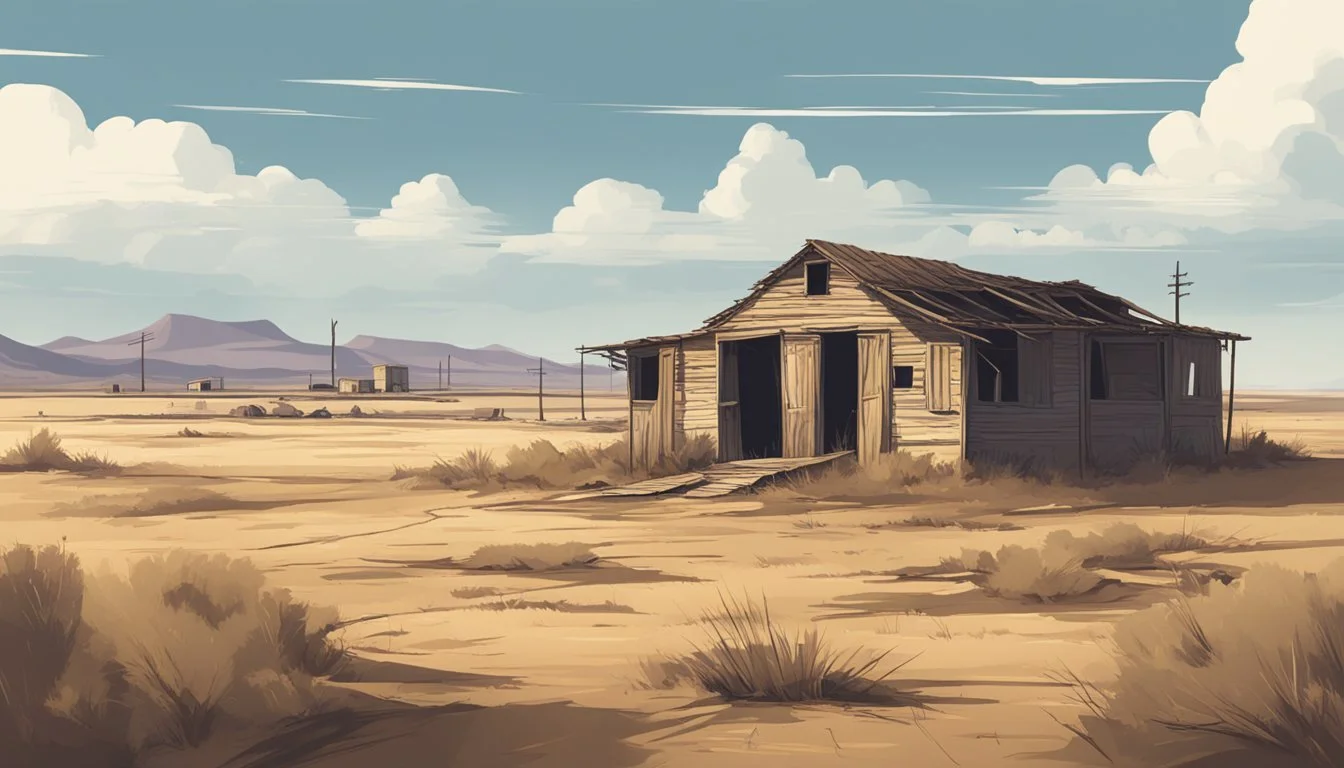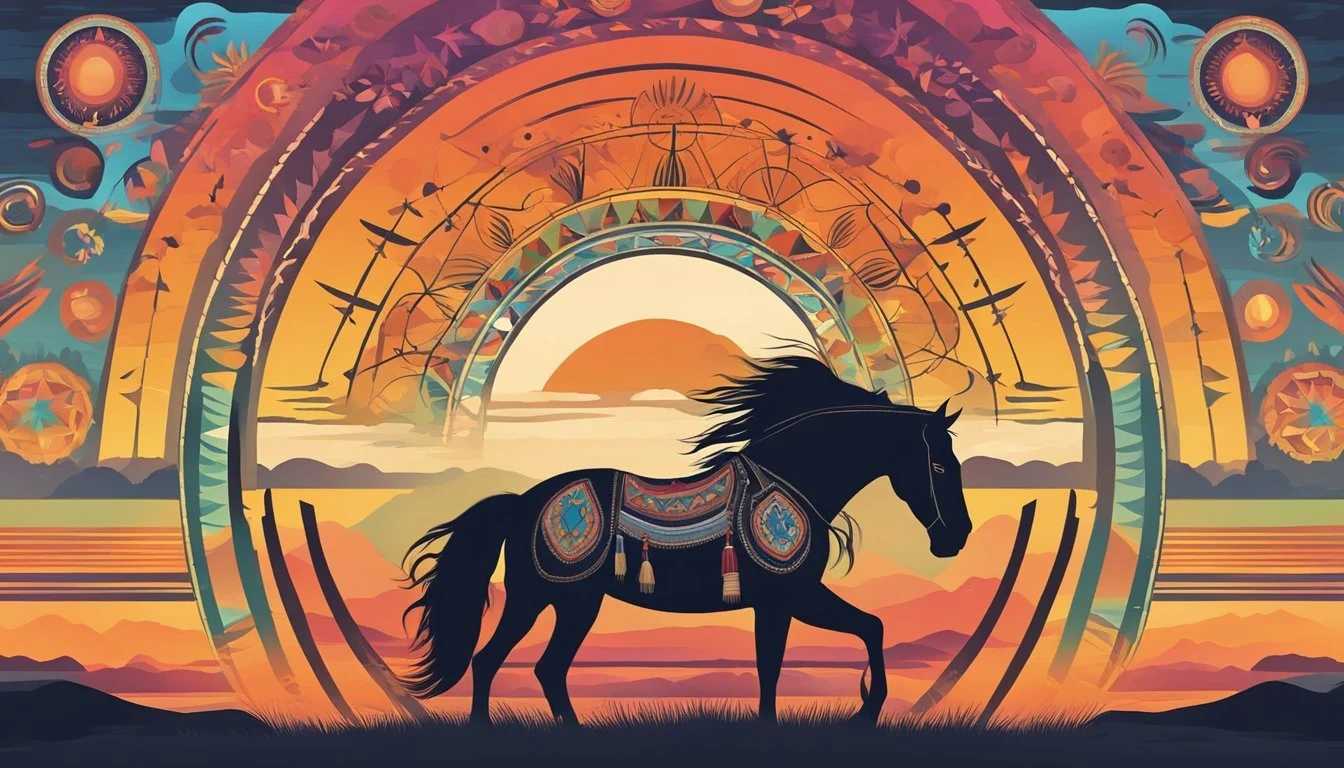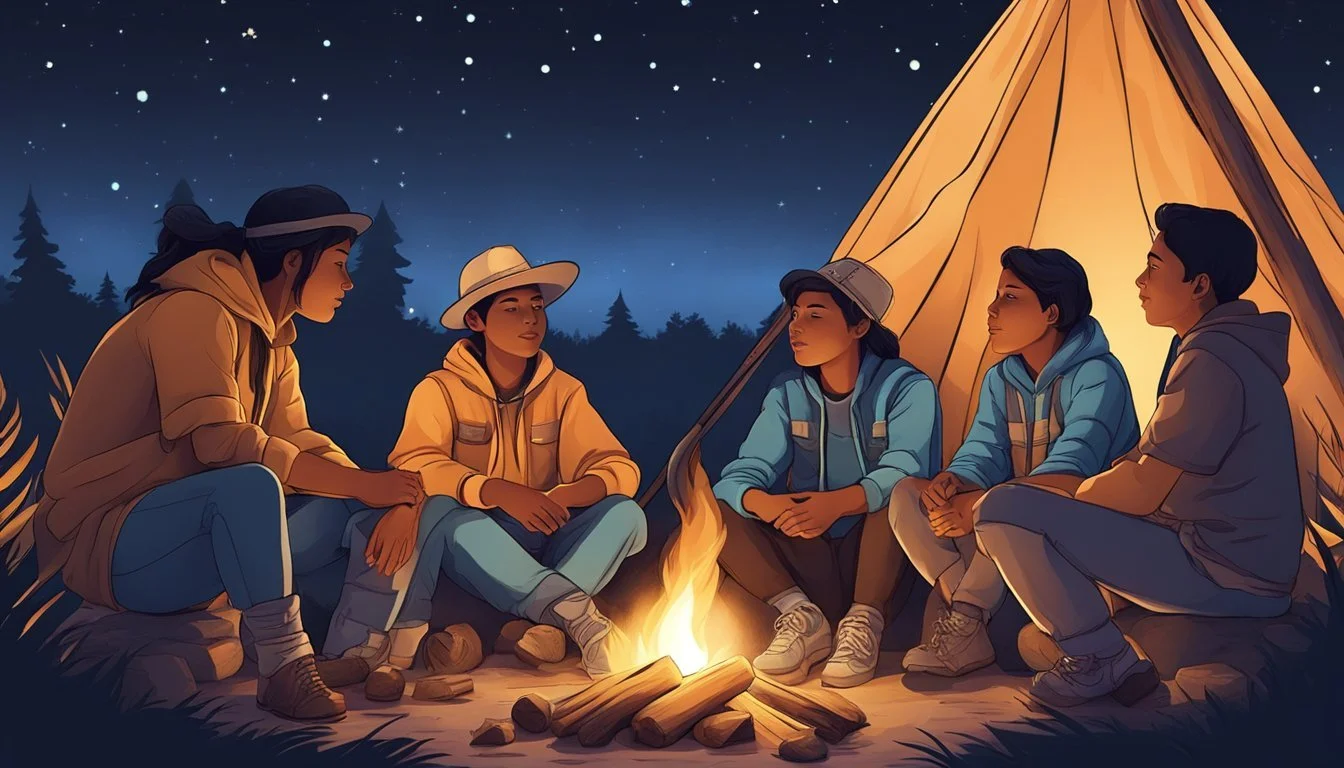9 Times Yellowstone Accurately Portrayed Native American Issues
A Critical Analysis of Representation
Yellowstone, the popular television drama series, has captivated audiences with its portrayal of life in the American West. Among its many storylines, the show's depiction of Native American issues has drawn both praise and criticism.
While not without flaws, Yellowstone has made efforts to accurately represent certain aspects of Native American experiences and challenges. The series touches on themes like tribal sovereignty, land rights, and cultural preservation, offering viewers glimpses into the complex realities faced by Indigenous communities in modern-day America.
1) Episode 'The Long Black Train' highlights land struggle
The fourth episode of Yellowstone's first season, "The Long Black Train," sheds light on the ongoing land conflicts between Native Americans and non-Native settlers. This episode explores the complex dynamics surrounding territorial rights and resource control in modern-day Montana.
The show depicts the Broken Rock Reservation's efforts to reclaim ancestral lands currently owned by the Dutton family. Chief Thomas Rainwater leads this push, emphasizing the historical injustices that have led to the current situation.
Through various scenes and dialogues, the episode illustrates the legal and cultural challenges faced by Native communities in their quest for land repatriation. It showcases the tension between tribal sovereignty and state jurisdiction.
The struggle over land ownership is portrayed as more than just a legal battle. It's shown as a deeply personal and cultural issue for both the Native characters and the Dutton family, who have different perspectives on land rights and usage.
By presenting multiple viewpoints, "The Long Black Train" offers viewers a nuanced look at the ongoing land disputes in the American West. It highlights the complexities of these conflicts without oversimplifying the issues at hand.
2) Chief Rainwater's leadership reflects real-life tribal governance
Thomas Rainwater's character in Yellowstone provides a glimpse into the complexities of modern tribal leadership. As chairman of the Confederated Tribes of Broken Rock, Rainwater navigates political, economic, and cultural challenges.
His role as casino owner mirrors the economic development strategies many real-world tribes employ. Rainwater's efforts to reclaim ancestral lands reflect ongoing legal battles and negotiations many Native American nations engage in.
The show depicts Rainwater balancing traditional values with modern realities, a common dilemma for tribal leaders. His interactions with state and federal officials showcase the intricate relationships between tribal, state, and federal governments.
Rainwater's character also highlights the importance of education in tribal leadership. Many real-life tribal chairpersons and chiefs hold advanced degrees, using their knowledge to advocate for their people.
The series portrays the democratic nature of tribal governance through Rainwater's elected position. This reflects the reality of many tribes, where leaders are chosen by their communities to represent their interests.
3) Portrayal of reservation economic challenges in 'Enemies by Monday'
The 'Yellowstone' episode 'Enemies by Monday' offers a glimpse into the economic hardships faced by Native American reservations. It depicts the limited job opportunities and financial struggles common in these communities.
The episode showcases the Broken Rock Reservation's efforts to improve its economic situation. Thomas Rainwater, the tribal chairman, explores various avenues to generate income and create jobs for his people.
One key element highlighted is the push for casino development on reservation land. This reflects a real-world strategy employed by many tribes to boost their economies and provide employment.
The show also touches on the complexities of land ownership and resource management. It illustrates how these factors impact the reservation's ability to achieve financial stability and self-sufficiency.
'Enemies by Monday' portrays the tension between traditional values and modern economic necessities. This conflict is a genuine challenge for many Native American communities striving to preserve their culture while improving their financial circumstances.
4) Episode 'Sins of the Father' depicts cultural ceremonies respectfully
The Yellowstone episode "Sins of the Father" showcases Native American cultural ceremonies with respect and authenticity. The show's creators consulted with tribal advisors to ensure accurate representation.
In this episode, a traditional healing ceremony is performed for Monica Dutton. The ritual is portrayed with care, avoiding stereotypes or sensationalism. The actors' performances convey the gravity and spiritual significance of the event.
The episode also features Native American characters leading the ceremony, giving them agency in their cultural practices. This approach stands in contrast to media depictions that often relegate indigenous people to background roles.
Attention to detail is evident in the ceremonial objects, clothing, and setting used in the scene. These elements reflect genuine Native American traditions without resorting to Hollywood clichés.
By presenting these ceremonies thoughtfully, Yellowstone contributes to a more nuanced understanding of Native American spirituality. The show demonstrates that respectful portrayals of indigenous cultures are possible in mainstream media.
5) 'Meaner Than Evil' raises awareness of historical trauma
The Yellowstone episode 'Meaner Than Evil' addresses the complex issue of historical trauma among Native American communities. It sheds light on the lasting impact of past injustices and their effect on present-day tribal members.
Through the characters' interactions and dialogue, the episode explores how generational trauma continues to shape Native American experiences. It portrays the struggles of indigenous individuals as they navigate the consequences of historical oppression and cultural loss.
The episode depicts the resilience of Native American characters in the face of ongoing challenges. It showcases their efforts to preserve their traditions and identity while confronting the lingering effects of historical trauma.
'Meaner Than Evil' also touches on the importance of acknowledging and understanding this trauma. It presents an opportunity for viewers to gain insight into the unique experiences of Native American communities.
By incorporating these themes, Yellowstone contributes to raising awareness about the long-term consequences of historical injustices. The episode encourages viewers to reflect on the ongoing impact of past events on indigenous peoples.
6) Season 4 addresses environmental issues affecting Native lands
Season 4 of Yellowstone brings attention to environmental challenges impacting Native American territories. The show depicts conflicts arising from resource extraction and development on tribal lands.
One storyline focuses on water rights disputes between the fictional Broken Rock Reservation and neighboring ranches. This reflects real-world tensions over water access in arid Western regions.
The series also touches on concerns about oil and gas drilling near sacred sites. Characters debate the economic benefits versus potential environmental damage from fossil fuel extraction.
Yellowstone portrays tribal leaders advocating for protection of culturally significant areas from industrial development. This mirrors ongoing efforts by Native communities to preserve their ancestral lands.
The show illustrates how environmental issues intersect with tribal sovereignty and self-determination. It highlights the complex relationships between Native nations, state governments, and federal agencies in land management decisions.
7) Authentic representation of legal battles over indigenous hunting rights
Yellowstone depicts realistic legal conflicts over Native American hunting rights. The show portrays the complexities of treaty agreements and federal regulations that impact tribal hunting practices.
Characters engage in negotiations and legal challenges to protect their traditional hunting grounds. These storylines reflect real-world disputes between Native tribes and government authorities over access to ancestral lands for subsistence hunting.
The series highlights the importance of hunting to indigenous cultures and economies. It shows how restrictions on tribal hunting rights can threaten food security and cultural traditions for Native communities.
Yellowstone's portrayal includes scenes of tribal members asserting their treaty-protected rights to hunt on disputed lands. This mirrors actual cases where Native Americans have faced legal consequences for hunting off-reservation.
The show also depicts the role of tribal lawyers and leaders in fighting for hunting rights through the court system. These storylines educate viewers about the ongoing nature of indigenous land rights struggles in modern America.
8) Episode 'No Good Horses' explores Native spirituality through art
The Yellowstone episode "No Good Horses" delves into Native American spirituality through artistic representation. This exploration occurs primarily through the character of Danny Trudeau, the father of a kidnapped girl.
Trudeau's involvement in the episode brings a mystical element to the story, showcasing aspects of Native American spiritual beliefs. His presence helps illuminate the connection between Native spirituality and artistic expression.
The episode incorporates visual elements that reflect Native American art and symbolism. These artistic touches serve to deepen the portrayal of Indigenous culture and beliefs within the Yellowstone narrative.
By intertwining Native spirituality with art, the episode provides viewers with a more nuanced understanding of Indigenous perspectives. This approach allows for a respectful and visually engaging representation of Native American spiritual traditions.
The artistic elements in "No Good Horses" contribute to the show's overall effort to accurately depict Native American issues and culture. Through this episode, Yellowstone demonstrates its commitment to portraying Indigenous spirituality with sensitivity and authenticity.
9) 'Blood the Boy' introduces Native youth empowerment initiatives
The Yellowstone episode "Blood the Boy" highlights efforts to empower Native American youth on the reservation. It depicts programs aimed at providing opportunities and support for young tribal members.
The episode shows initiatives focused on education, cultural preservation, and economic development for Native youth. These include mentorship programs, skills training workshops, and entrepreneurship support.
There are scenes featuring tribal elders working with teenagers to pass down traditional knowledge and practices. This intergenerational connection helps strengthen cultural identity and community bonds.
The episode also touches on efforts to address challenges facing Native youth, like substance abuse and unemployment. It portrays tribal leaders and community members coming together to create positive change.
By showcasing these youth empowerment initiatives, the episode offers a nuanced look at modern reservation life. It demonstrates how tribes are taking proactive steps to invest in their next generation of leaders.
Historical Context of Native American Representation
Native American representation in media and U.S.-Native American relations have evolved significantly over time, shaping perceptions and policies.
Evolution of Portrayal in Media
Early Hollywood films often depicted Native Americans as one-dimensional stereotypes. "Noble savages" or violent antagonists were common tropes. These portrayals reinforced harmful misconceptions about Indigenous cultures.
In the 1950s and 60s, some films began challenging these stereotypes. "Broken Arrow" (1950) and "Little Big Man" (1970) offered more nuanced portrayals. However, progress was slow and uneven.
The 1990s saw a shift towards more authentic representation. Films like "Dances with Wolves" (1990) and "Smoke Signals" (1998) featured Native American actors and directors. This trend has continued, with recent productions prioritizing Indigenous voices and perspectives.
Critical Moments in U.S.-Native American Relations
The Indian Removal Act of 1830 forced many tribes from their ancestral lands. This policy resulted in the Trail of Tears, a devastating forced relocation.
The Dawes Act of 1887 aimed to assimilate Native Americans by dividing tribal lands into individual allotments. This led to significant land loss and cultural disruption.
The Indian Citizenship Act of 1924 granted U.S. citizenship to all Native Americans. However, many states continued to deny voting rights until the 1960s.
The Indian Self-Determination and Education Assistance Act of 1975 marked a shift towards tribal sovereignty. It allowed tribes more control over their affairs and resources.
Authenticity in Yellowstone's Storytelling
Yellowstone strives for authenticity in its portrayal of Native American characters and issues. The show collaborates with Indigenous advisors and incorporates real-world challenges faced by tribal communities.
Collaboration with Native Advisors
Yellowstone's creators work closely with Native American consultants to ensure accurate representation. These advisors provide insights into cultural practices, language, and contemporary issues. The show features characters from the fictional Broken Rock Indian Reservation, allowing exploration of tribal sovereignty and land rights conflicts.
Costume design and set decoration benefit from expert input, reflecting authentic tribal aesthetics. Native actors are cast in key roles, bringing personal experiences to their performances. This collaborative approach helps avoid stereotypes and presents a more nuanced portrayal of Indigenous life.
Challenges of Accurate Representation
Despite efforts towards authenticity, Yellowstone faces challenges in balancing entertainment with realistic depictions. The show sometimes simplifies complex tribal politics for narrative purposes. This can lead to criticism from Indigenous viewers who seek more nuanced storytelling.
Portraying diverse Native experiences within limited screen time poses difficulties. Yellowstone focuses on specific fictional tribes, potentially overlooking the vast diversity of real Indigenous nations. The show grapples with depicting both traditional practices and modern realities of Native life.
Addressing historical traumas while avoiding exploitation requires careful consideration. Yellowstone attempts to navigate these sensitive topics, though some critics argue for deeper exploration of systemic issues affecting Native communities.
Impact of Representations on Native American Communities
Yellowstone's portrayal of Native American characters and issues has influenced public perception and raised cultural awareness. The show's depictions have reached a wide audience, sparking conversations about Indigenous experiences and challenges.
Influence on Public Perception
Yellowstone has exposed viewers to complex Native American characters and storylines. This representation has challenged stereotypes and provided a more nuanced understanding of Indigenous communities. The show highlights issues like land rights, sovereignty, and cultural preservation, educating audiences about ongoing struggles.
By featuring Native American actors in prominent roles, Yellowstone has increased visibility for Indigenous talent in mainstream media. This representation has the potential to inspire Native youth and create more opportunities for Indigenous artists in the entertainment industry.
Cultural Significance and Awareness
Yellowstone's inclusion of Native American traditions, languages, and customs has brought these cultural elements to a broader audience. This exposure has sparked interest in learning more about Indigenous cultures and history.
The show's depiction of contemporary Native American life has helped dispel outdated notions that Indigenous peoples exist only in the past. It showcases the resilience and adaptability of Native communities in modern contexts.
By addressing topics like environmental stewardship and connection to the land, Yellowstone has highlighted important Native American values. This representation has fostered greater respect and understanding for Indigenous perspectives on conservation and land management.









